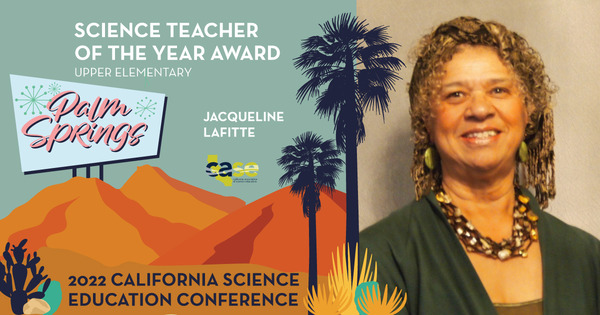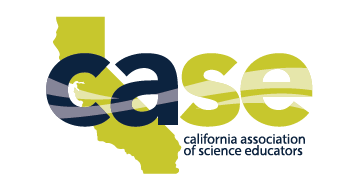
Teacher of the Year (Upper Elementary): Jacqueline Lafitte
Jacqueline Lafitte
What made me decide to become a teacher?
In 1992 I decided to become a teacher when my oldest daughter, Danielle was in 8th grade and her sister, Gabrielle was in 4th grade. I was transitioning from working as a costumer at Mills College, whose Drama Department was closing for lack of funding. God had been calling me to teach for years, so now I decided to say, “Yes, God, '' but I had a condition that I needed to make enough money, even though I was not experienced nor did I have a credential. I thought I was being sly with God because it was October and the school year had already begun. A principal, Sister Barbara from Sacred Heart, asked me to join a planning team for the Dioceses of Oakland’s 8th grade Awards Ceremony. She wanted me to coach two students from Holy Names High to prepare them to be the keynote speakers. Another principal, Sister Mary Virginia who also attended, was struggling to recruit a substitute. Suffice it to say, by January, I started substitute teaching at St. Elizabeth Elementary in Oakland. Within a month I accepted a shared teaching post with a 4th grade teacher until that June. The next fall, I became a full time 4th grade teacher while enrolled in the teacher credential program at Holy Names College. A year later I moved to Cherryland in Hayward Unified School District where I am still using my gift to teach 5th graders.
Why are you passionate about science education?
I grew up in a large family of 10 children on a small, 1 acre farm in Louisiana with a large vegetable garden, watermelons, mayhaw berry trees, chickens, ducks, and pigs. My father was a fisherman that also loved crabs and crawfish. I was a “Daddy’s Girl” and enjoyed being outdoors. When I came indoors I spent time sewing, first on a treadle, then on an electric sewing machine. Later, I studied fashion design and worked in manufacturing. This background created my natural instinct for teaching science.
Teaching science includes the disciplines of technology, engineering, math and even art. Children love science. Science explores life. Science creates productivity. Science answers questions to real life problems. Science helps to develop the whole child and allows them to touch, explore, plan, measure, theorize, build and produce something tangible that brings them joy! I love watching my students' reactions when their projects are complete!
What are some of the most rewarding and challenging aspects of teaching?
I have a long list of rewarding aspects of teaching, especially since I love to include art in my classroom and in afterschool programs. Creating the celebration of the Mass, “Let There Be Peace” with my students at St. Elizabeth was the best of memories until 1995. We created a huge “Happy Birthday to Jesus'' canvas painting to decorate the Oakland Airport for the holidays. At Cherryland I directed a mural, “Cherryland Friendship Quilt,” and the entire community participated. I also created an after school Drama Club where
I have watched 4th-6th grade students break through their shyness to go on stage and perform. The Sounds of Great Voices, One People, The Year Santa Forgot Christmas, Kids and Parents, The Lion and The Mouse are some of the plays I have directed over the years. It fills my heart to see my students' eyes light up when they perform at Chabot College Theater. It was moving to hear students’ video tributes they wrote to Martin Luther King when we were in virtual learning during COVID. My class investigated and identified all of the landscaped plants as well as those in our garden beds. Students then created Google Slides of the plants and mapped where to locate them on campus. I also ran an afterschool Garden Club. It is rewarding to learn outdoors while planting vegetables and pulling weeds. In spring of 2022 with STEM4REAL, my students created incredible accordion books that depict heartfelt empathy for Eseka High School's need for a water well in Cameroon.

There are many challenges! Lack of funding to buy supplies and go on study trips are limiting. However, the major challenge is overcrowded classrooms in our district. I thought the COVID pandemic finally changed class size reduction. It didn’t! I teach an average of 32 students per year in 5th grade. With so many students in the classroom, it is difficult to reach them all. I have students without IEP’s that need to learn how to read and write. Because of their age, they are stuck in a classroom that is not teaching phonemic awareness at the level they need. Teachers need paraeducators for classroom support. There are also many challenges with behavior. Post COVID, students struggled even more after having been shut in for over a year away from peers. Implementing social distancing, long hand washing lines and policing mask wearing made things even more challenging for everybody!
How have your partnerships with various organizations (STEM4Real, Water Wizard, the nonprofit Sayap Africa) made your lessons more enriching for students?
Hayward Unified partnered with UC ANR’s Water Wizards Youth Program to provide our students with hands-on learning that encouraged inquiry and environmental literacy for students to take action on community water issues. The program was one day a week over a 12 week period and included a Science teacher! At the end of the 12 weeks, our classrooms went on an amazing free field trip to Elkus Ranch and the beach, bus included!
I volunteer with the nonprofit Sayap Africa. Part of our vision is to create a STEAM curriculum for afterschool learning centers, beginning at Eseka High School in Cameroon. However, those 2,000+ high school students don’t have running water and need a well deep enough to reach the water table. As I taught my students about the many uses of fresh water, conservation, percentages on Earth and lack of access, I thought about creating an awareness project. I introduced my students to the dilemma using a STEAM project to develop empathy for students thousands of miles away.
Dr. Leena Bakshi and Marie Gorman with STEM4REAL helped me develop my creative concepts through an incredible STEAM lesson study process. I needed their expertise to match the standards with the lessons. I needed the format and the technical support to create the documentation. They collaborated with me and offered many creative suggestions in addition to my own.
What does this award mean to you?
I am honored to receive this award on behalf of so many others who collaborated with me in this groundbreaking contribution to Science Education. This award solidifies the idea of bringing awareness that the immediate need to build a fresh water well at Eseka High School is a real world problem. This award means that this curriculum can be duplicated for teachers to build empathy to bring awareness to their students for any cause dear to their hearts both locally and internationally. This award means with STEAM we have the ability to bridge gaps that will foster new relationships globally.
Quick Links
Exhibit Partner Package
Opening Soon
Join us at the 2025 California Science Education Conference, the premier event for science educators across California! This gathering is your chance to showcase your products, engage with educators, and maximize your impact through our exclusive Partner Program.

